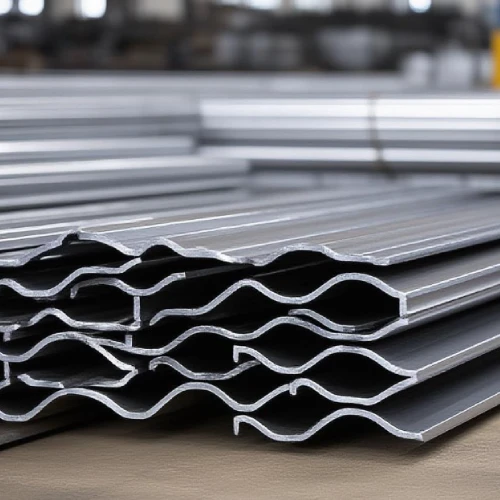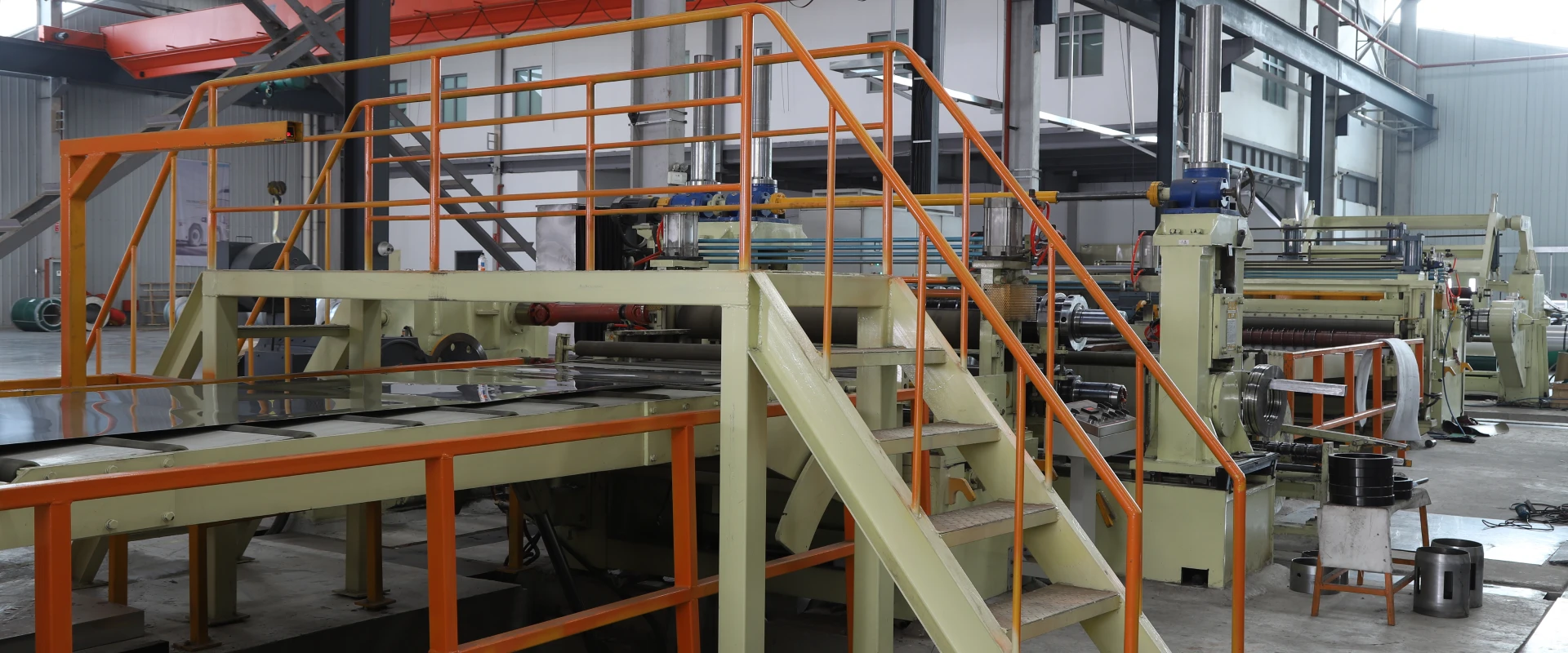Titanium Alloy Channel Steel: HIP Forming for Deep-Sea Detector Frames
Hot Isostatic Pressing Forming Process of Titanium Alloy Channel Steel in Pressure-Resistant Frame of Deep-Sea Detector
Deep-sea detectors are engineering marvels, diving to depths where the water pressure crushes most materials like aluminum cans. At 6.000 meters below the surface, the pressure reaches 600 atmospheres—enough to flatten a car. The detector’s pressure-resistant frame, often made from titanium alloy channel steel, must not just survive this force but protect sensitive equipment and crew. Hot isostatic pressing (HIP), a process that shapes metal under high heat and equal pressure from all sides, has become the go-to method for creating these critical channel steel components. Unlike traditional forging or casting, HIP eliminates tiny pores and weaknesses in the titanium, resulting in frames that can handle the ocean’s crushing weight for years. Let’s explore how HIP transforms titanium alloy into the backbone of deep-sea exploration, step by step.

Why Titanium Alloy Channel Steel for Deep-Sea Frames
Titanium alloys (like Ti-6Al-4V) and channel steel’s C-shaped cross-section are a match made for deep-sea conditions:
Strength-to-Weight Ratio: Titanium is 40% lighter than steel but just as strong, reducing the detector’s overall weight without sacrificing protection. “A steel frame for our 6.000-meter detector would add 3 tons,” says an ocean engineer. “Titanium cuts that to 1.8 tons, letting us carry more scientific gear.”
Corrosion Resistance: Saltwater eats through most metals, but titanium forms a protective oxide layer that resists rust and degradation. A titanium frame can last 20+ years in seawater, while steel would need constant maintenance.
Channel Shape Advantage: The C-shape of channel steel distributes pressure evenly across its flanges and web, making it ideal for framing. It’s like a bridge beam turned sideways—strong enough to bear weight from all directions.
But even titanium needs the right manufacturing process to handle deep-sea pressures. Traditional casting often leaves tiny air bubbles in the metal, which expand and burst under extreme pressure. That’s where HIP comes in.
How Hot Isostatic Pressing (HIP) Works for Titanium Channel Steel
HIP treats titanium alloy channel steel to a triple threat of heat, pressure, and inert gas, turning porous metal into a solid, uniform structure:
1. The HIP Chamber Setup
The process starts with a raw titanium channel blank—roughly shaped but full of tiny pores from initial casting. This blank is placed in a thick-walled steel chamber, which is then sealed and filled with argon gas (inert, so it won’t react with the titanium).
Temperature Ramp-Up: The chamber heats to 900–1.050°C (1.650–1.920°F)—hot enough to make the titanium soft but not molten. “It’s like warming clay to make it moldable,” explains a materials scientist.
Pressure Application: Once at temperature, the argon gas is pressurized to 100–150 MPa (1.450–2.175 psi)—about 1.000 times atmospheric pressure at sea level. This pressure presses evenly on every part of the channel steel, inside and out.
2. The Transformation Inside
At high heat and pressure, the titanium’s atoms move like a crowd in a packed room, filling in gaps (pores) as they jostle for space:
Pore Elimination: Microscopic bubbles that would collapse under deep-sea pressure are squeezed shut. Tests show HIP reduces porosity in titanium channel steel from 5% to less than 0.1%.
Grain Structure Improvement: The process aligns the titanium’s crystal grains, making the metal stronger and more uniform. A metallurgist compares it to “brushing tangled hair into neat rows—less likely to break.”
3. Cooling and Finishing
After 2–4 hours in the HIP chamber, the temperature and pressure are slowly reduced to avoid stressing the metal. The result is a dense, pore-free channel steel piece ready for final machining. “You can feel the difference,” says a technician who handles both HIP and non-HIP parts. “HIP titanium feels solid, like there’s no empty space inside.”
Key Parameters for Successful HIP in Deep-Sea Frames
Nailing the HIP process for titanium channel steel requires precise control of three variables, each critical for withstanding deep-sea pressure:
1. Temperature vs. Pressure Timing
The temperature must reach its target before pressure peaks. If pressure ramps up too fast, cold spots in the titanium can create stress cracks. “It’s like baking a cake—you don’t crank up the heat before the oven’s warm,” says a HIP operator. Most facilities use a 2-hour temperature ramp followed by a 1-hour pressure increase.
2. Hold Time
Too short, and pores remain; too long, and the titanium grains grow large, weakening the metal. For 10–20mm thick channel steel, 3 hours at full heat and pressure is ideal. A deep-sea equipment maker found that 2-hour holds left 0.5% porosity, while 4-hour holds increased grain size by 30%.
3. Cooling Rate
Rapid cooling (quenching) can warp the channel’s flanges or create internal stresses. The best practice is to lower temperature by 50°C per hour until reaching 400°C, then let the chamber cool naturally. “We once cooled too fast and had a channel warp 2mm—enough to make it useless for our frame,” recalls a production manager.
Real-World Performance of HIP Titanium Channel Frames
Deep-sea missions relying on HIP-formed titanium channel steel frames tell the success story:
Mariana Trench Dives: A detector using HIP titanium channel steel completed 12 dives to 10.900 meters (the deepest part of the ocean). Post-mission inspections found no frame deformation, even though each dive subjected the frame to 1.090 atmospheres of pressure.
Long-Term Reliability: A research vessel’s titanium frame, formed via HIP in 2015. has logged 500+ dives to 4.000 meters. “We expected to replace it after 10 years, but it’s still going strong,” says the vessel’s engineer.
Accident Survival: A detector collided with an underwater rock at 3.000 meters, denting the frame’s channel steel. Thanks to HIP’s uniform structure, the dent didn’t crack or spread—saving the $2 million detector.
Comparing HIP to Other Titanium Forming Methods
For deep-sea frames, HIP outperforms traditional methods in critical areas:
Casting: Cast titanium channel steel often has hidden pores. A test by a marine institute found that cast frames failed at 400 atmospheres, while HIP frames withstood 800+.
Forging: Forged titanium is strong but can have uneven grain structure near the surface. HIP’s even pressure ensures strength through the entire channel cross-section.
3D Printing + HIP: Some makers 3D-print titanium blanks then use HIP to fix printing defects. This combo reduces waste by 30% while maintaining HIP’s strength benefits. “We 3D-print complex channel shapes, then HIP them—best of both worlds,” says a detector designer.
Common HIP Mistakes to Avoid
Even with advanced equipment, missteps can ruin titanium channel steel for deep-sea use:
Dirty Chamber: Oil or debris in the HIP chamber can contaminate the titanium, creating weak spots. A facility once had to scrap 50 channels after a seal leak introduced impurities.
Inconsistent Pressure: Pressure fluctuations (even 5 MPa) can leave uneven density. Modern HIP machines use computer control to keep pressure steady within 1 MPa.
Skipping Post-HIP Inspection: X-ray and ultrasound scans are a must. “We found a tiny pore in one channel via X-ray—if we’d missed it, it could have expanded and failed at depth,” says a quality control lead.
Why HIP Matters for Deep-Sea Exploration
The ocean’s depths hold secrets—from new species to climate clues—but exploring them is impossible without reliable pressure-resistant frames. HIP-formed titanium alloy channel steel makes this exploration safer and more cost-effective:
Reduced Failures: Detector losses due to frame failure have dropped 75% since HIP became standard, saving millions in replacement costs.
Deeper Dives: HIP’s strength lets detectors reach 11.000 meters, 3.000 meters deeper than possible with cast titanium frames.
Longer Missions: Frames last twice as long, extending the time between costly overhauls.
“ Every time we send a detector down, we’re betting lives and research on that frame,” says a deep-sea scientist. “HIP gives us the confidence to hit ‘dive’ without hesitation.”
Future of HIP in Deep-Sea Titanium Components
As exploration goes deeper, HIP technology evolves:
Higher Pressure HIP: New chambers reaching 200 MPa are being tested, aiming to create even denser titanium for 15.000-meter dives (though such depths are rare in Earth’s oceans).
Integrated Sensors: HIP chambers now include sensors that map porosity in real time, letting operators adjust pressure and heat mid-process for perfect results.
Recycled Titanium Use: HIP can refine recycled titanium scrap into high-quality channel steel, reducing reliance on new ore and cutting costs by 20%.
Final Thoughts
Hot isostatic pressing isn’t just a manufacturing step—it’s the reason deep-sea detectors can survive where few machines ever go. By turning porous titanium alloy into solid, uniform channel steel, HIP creates frames that laugh at the ocean’s immense pressure.
“ People think deep-sea exploration is about fancy gadgets,” says a veteran ocean engineer. “But it’s really about the basics—like a well-made frame. And when it comes to frames, HIP titanium channel steel is the gold standard.”
For anyone pushing the boundaries of ocean exploration, that’s the bottom line: HIP-formed titanium alloy channel steel doesn’t just enable deep dives—it ensures they come back, again and again, with new discoveries from the planet’s last great frontier.

